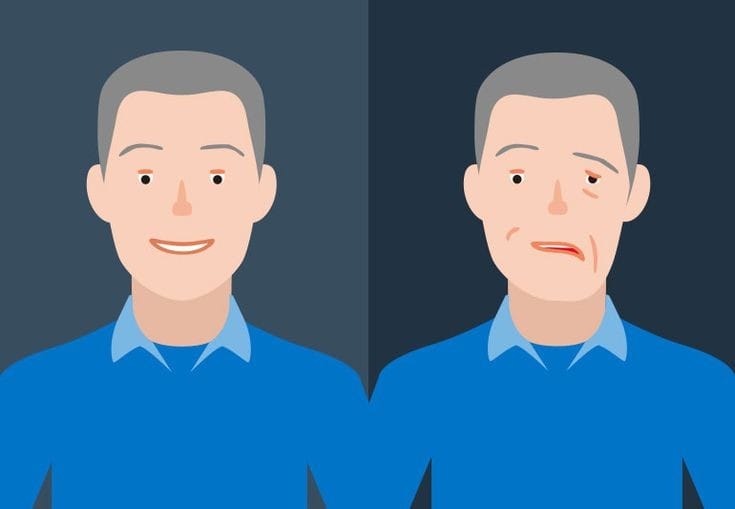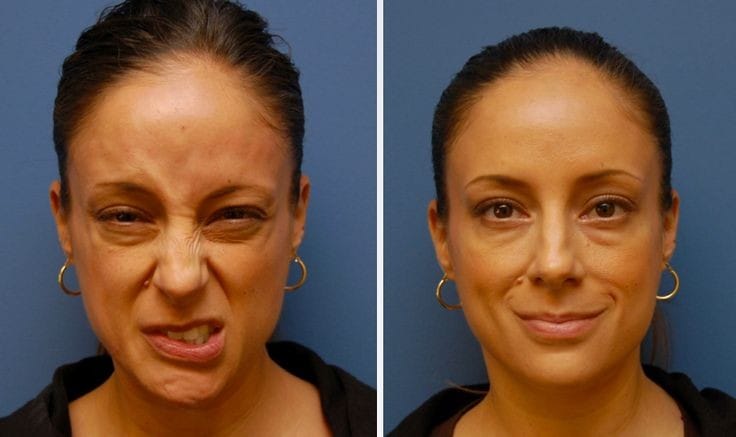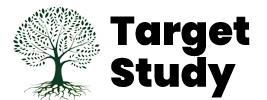In Ayurveda, the balance of problems, health, and imbalance are considered to be the causes of diseases. Among the three problems named Vata-Pitta-Kapha, the work of creation, confirmation, and compensation of the body at every moment is handled by Kapha.
To make these things suitable for the body, necessary changes are done by pitta. The manifestation of the pitta and kapha problems and the control and functioning of their functions is accomplished by vata.
Due to facial paralysis problems, cough and bile remain active. Thus, among all the three problems, facial paralysis predominates. Diseases arising from the derangement of gas problems are called rheumatism.

Table of Contents
What is Facial Paralysis (Bell’s Palsy)
80 types of rheumatic diseases have been described in Ayurveda, out of which facial paralysis is also a type of rheumatic disease. In paralysis, the power to work in the affected area is lost.
When only the face or mouth is affected by paralysis, it is called facial paralysis. Thus, the disease arising from the disorder of Vatadosha in which half of the patient’s mouth becomes crooked, is called paralysis disease in Ayurveda and facial paralysis in modern medical science.
The disease which causes pain in the mouth is called facial paralysis. In facial paralysis, there is curvature and pain in half of the mouth. Acharya Charak has described facial paralysis as a disease occurring in the mouth (half of the mouth) or body (half of the body), but Acharya Sushruta has described facial paralysis as a disease occurring in the mouth.
Acharya Vagbhatta has called facial paralysis by the name Ekayam. If we believe in Acharya Charak, then there will be no difference between pain and paralysis due to it being in the body.
In this way, facial paralysis should be considered as facial paralysis. According to Acharya Sushruta, a patient suffering from facial paralysis has special deformities in the side eyes, ears, nose, forehead, lips, jaw, and teeth.
In this way, facial paralysis disease takes the mouth part out of control and leaves it in a disability-like condition.

Facial Paralysis Causes
According to Ayurveda, speaking in a loud voice, eating hard foods, laughing too loudly, yawning, heavy lifting, and sleeping in odd postures cause damage to the face or brain due to compression of sensory or sensory nerves, etc.
Apart from this, this disease occurs due to the consumption of gas-enhancing food, intake of very cold air, and excessive blood loss in pregnant women, pregnant women, children, and old and emaciated men.
Sometimes this disease occurs due to high blood pressure. Diabetes is the cause of high blood pressure in many patients.
Facial paralysis disease can also occur due to excessive exercise, injury due to falls, due to long-term illness, the habit of inhibiting basal movements, mental illnesses, waking up at night, nutritional deficiency, etc.
According to Acharya Charak, when a highly increased air is situated on either the right or left side of the body, then that air dries up the blood in that half of the body and compresses the hands, legs, and metal and causes damage to the mouth and nostrils, eyebrows, forehead, eyes. And makes the jaw crooked.
According to modern opinion, facial paralysis is the result of a deformity of the 7th facial nerve. This nerve controls the movements of the entire muscle group of the mouth except the levator palpebra superions.
There are independent nerves, one on each side, for the left and right sides of the mouth. facial paralysis disease occurs on the side where the pulse is distorted.
It can also occur due to cold, edema, compression of the nerve tract through the fallopian canal, chronic suppurative otitis media, herpes zoster, Gullenberry syndrome or multiple sclerosis, etc.
Facial Paralysis Symptoms
In facial paralysis disease, half of the patient’s face becomes crooked and the neck also becomes crooked, and the head trembles. Deformities occur in the eyes, forehead, cheeks, lips, and tongue. The patient has difficulty speaking and his voice does not come out clearly.
The affected eye does not rotate properly. If the patient is asked to take out his tongue, it comes out crooked on one side. When the patient eats food or drinks water, the food and water come out from the affected area and fall.
The patient suffers from loss of hearing (decreased power of hearing), loss of smell (decreased power of smell), lack of chemistry, and dental pain (pain in teeth). Pain behind the ear occurs in most patients and can last up to two days after paralysis.
There is watering of the eyes and a lack of sweating on the affected side. The patient continues to have a kind of red discharge. When folds are applied on the forehead, there are no folds.
According to Ayurveda, when the following symptoms occur due to facial paralysis disease, it should be considered incurable, such as the patient is weak and old, the eyelids do not close, he is completely unable to speak, he also has tremors, water flows continuously from the nose, mouth and eyes. And the disease is more than 3 years old.
Types of Facial Paralysis
Three types of Ardit have been described as Vaataja, Pittaja, and Kaphaja.
- In Vaataj Facial paralysis disease: Symptoms like excessive salivation (falling of saliva), tremors, organ spasms (excessive twitching of body parts), stiffness of jaws, swelling in both the lips, and colic symptoms occur.
- In Pittaja Facial paralysis disease: The body becomes yellow in color, one feels more thirsty and fainting occurs and a feeling of heat is felt.
- In Kaphaj Facial paralysis disease: there is swelling and stiffness in the glans, head, and carotid artery.

Facial Paralysis Treatment
In Ayurveda, two methods have been suggested for the treatment of any disease – modification therapy and palliative therapy.
Under modification therapy: body purification activities i.e. Panchakarma (Five elements) and other rituals are included. If after corrective therapy, palliative therapy i.e. medicinal therapy is used, then the patient gets relief quickly.
To get rid of Vata Dosha in facial paralysis disease, Mahanarayan oil, Kshirwala oil or Prasarini oil should be massaged on the affected area. Apart from this, abhyanga of bala oil should be done and nadi sweda and upanaha should be done.
Under Nadi Swada, it is beneficial to make a decoction of carminative liquids and apply steam on the affected part of the mouth. A poultice made from linseed, black sesame, and mustard oil should be used.
Offering the head by filling it with carminative oil through Shirovasti is very beneficial. In this disease, applying paste and compress on the affected area is beneficial.
For this, after taking a hawthorn leaf and destroying its thorns by burning it in fire, an incision is made in the middle of the leaf with a knife and it is divided into two parts.
Put turmeric powder and fine powder of rock salt on the inner part, roast it for a while on flame, place it on the affected area, and tie it. This helps in activating the distorted nerves.
Eye tarpan during facial paralysis should be done with cow’s milk or Triphala ghrit. It is beneficial to give Katphal Nasya or Cow Ghee Nasya.
Apart from this, Nasya of Anu oil, Shadbindu oil, Ksheer oil, Bhasha oil, etc. should be given after slight sweating. Fill the mouth with sesame oil or Mahanarayan oil so much that the mouth does not move i.e. it should be gargled.
Ears should be filled with Nirgundi oil of Karnapuran. Ksheerwala oil basti should be given. To overcome Vata, castor oil should be used along with milk for purgative purposes in this disease.
Vomiting should be done if there is swelling due to Vata’s predominant symptoms. Siravedha is beneficial in burning and raging Ardit. A person suffering from Ardit should eat large pieces of urad with Navneet (butter), drink milk, and consume Dashamool Kwath with Mansaras.
To strengthen the distorted Vata Nadi (nerve) and to remove Vata outbreak, the main yogas prescribed in Ayurveda are Vrihatvatchintamani Ras, Vatavihesya Ras, Vatkulantar Ras, Rasraj Ras, Sajirpannag Ras, Ekangveer Ras etc.
Apart from this, Bhallatakavaleh, Mashagodan, Yogaraj Guggulu, Panchamrit Lauh Guggulu, Ashwagandharishta, Belarishta, Saraswatarishta, etc. are also said to be beneficial, but the above-mentioned medicines and Panchakarma should be used only under the supervision of a qualified Ayurveda doctor.

